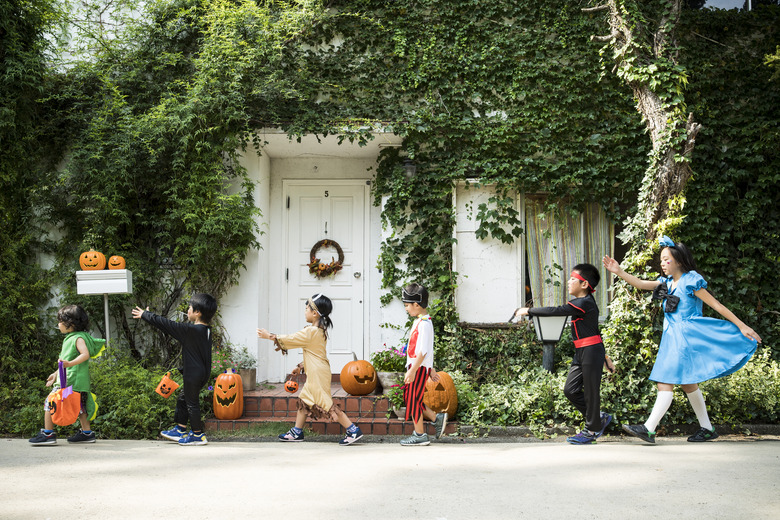This Is How Trick-Or-Treating Actually Started
Trick-or-treat! Yelling this on your neighbors' doorsteps is probably one of your favorite fall memories — and one of the strangest. Kids accepting candy from strangers is generally frowned upon in other contexts; but on Halloween, kids actually demand sweets from strangers. What's up with that?
The Rudest Trick-or-Treating Mistakes
In America, trick-or-treating has only really been around since the 1920s — but this beloved tradition has roots extending all the way back to ancient times. An ancient Greek guy named Athenaeus recorded a similar custom in his famous history books: Children would dress as swallows and sing a song threatening to cause trouble (tricks) unless the homeowners gave them food (treats).
But this probably isn't the explanation for today's tradition. It more likely evolved from something people did in the Middle Ages, called "mumming" (not to be confused with "mummies"). In Britain and Ireland, people would dress up in elaborate costumes (none of which involved being wrapped in toilet paper) and go door to door performing scenes and songs. In return, the performers would beg for food or drinks.
The history gets even murkier. There are other recorded, and eerily similar, Christian customs. In the 1400s, people in Europe would go "soul-ing." Sounds spooky, right? But soul-ing wasn't sinister at all. People would roam door-to-door during evenings of Allhallowtide, a holiday from October 31 to November 2 designated to remember the dead. They would sing songs and beg for "soul-cakes," tiny treats given in exchange for prayer for their souls. Dressing up wasn't uncommon; but the costumes weren't necessarily spooky.
The scary part of Halloween — the ghouls, goblins, and other creepy creatures — was passed on from other influences. People started dressing spooky because of Celtic folklore about supernatural beings, some of which were wandering dead people's souls. At the end of every year, it was believed that the dead would temporarily return to Earth to walk amongst the living. It was thought that if you dressed convincingly enough like a ghost, the real ghosts wouldn't get you. They'd think you were one of them.
A lot has changed about trick-or-treating since then, like the most popular candies and biggest costume trends. With the exception of, like, Elvis and Marilyn Monroe, most people don't dress up as actual dead people. You can dress as pretty much whatever you want! But do everyone a favor and avoid these common costumes — they're just unacceptable.
